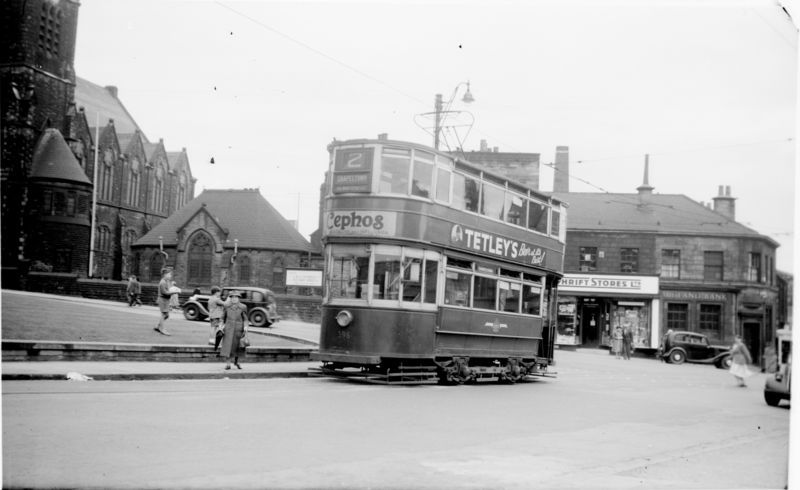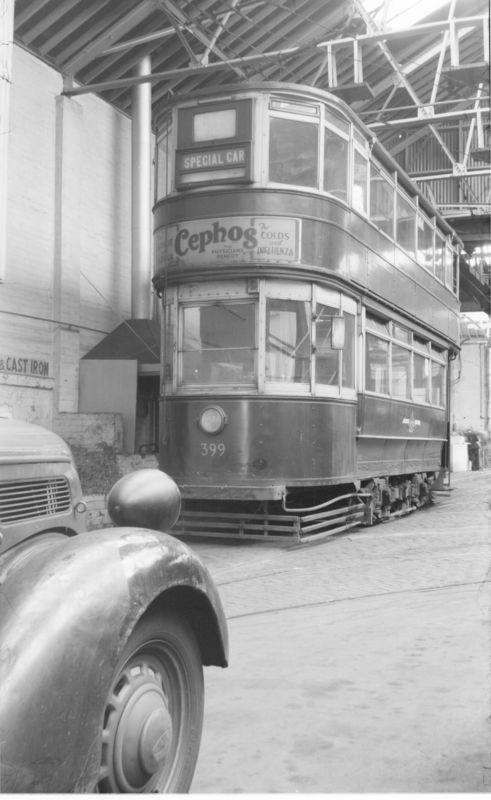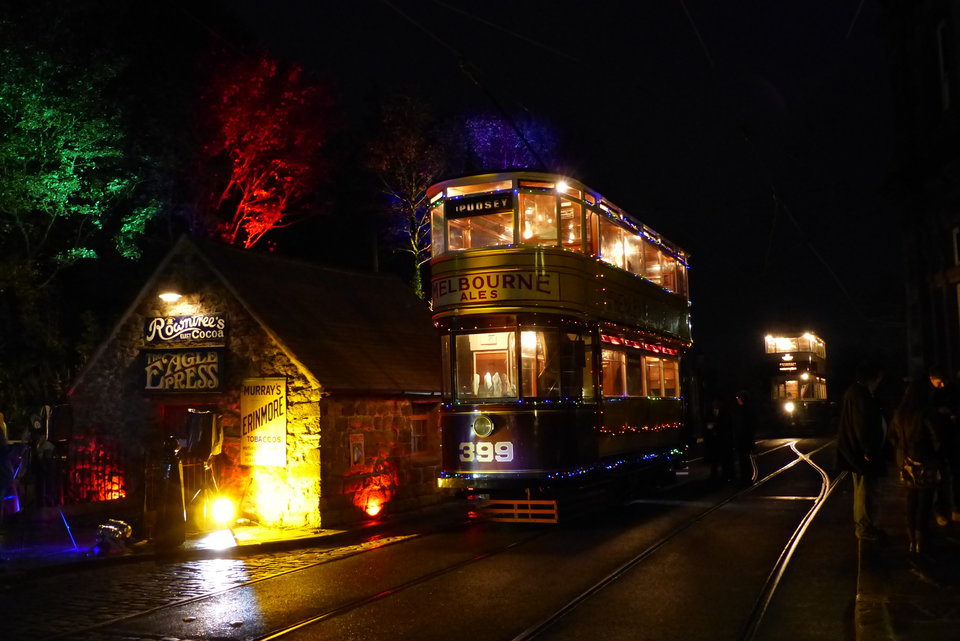Leeds City Transport No. 399
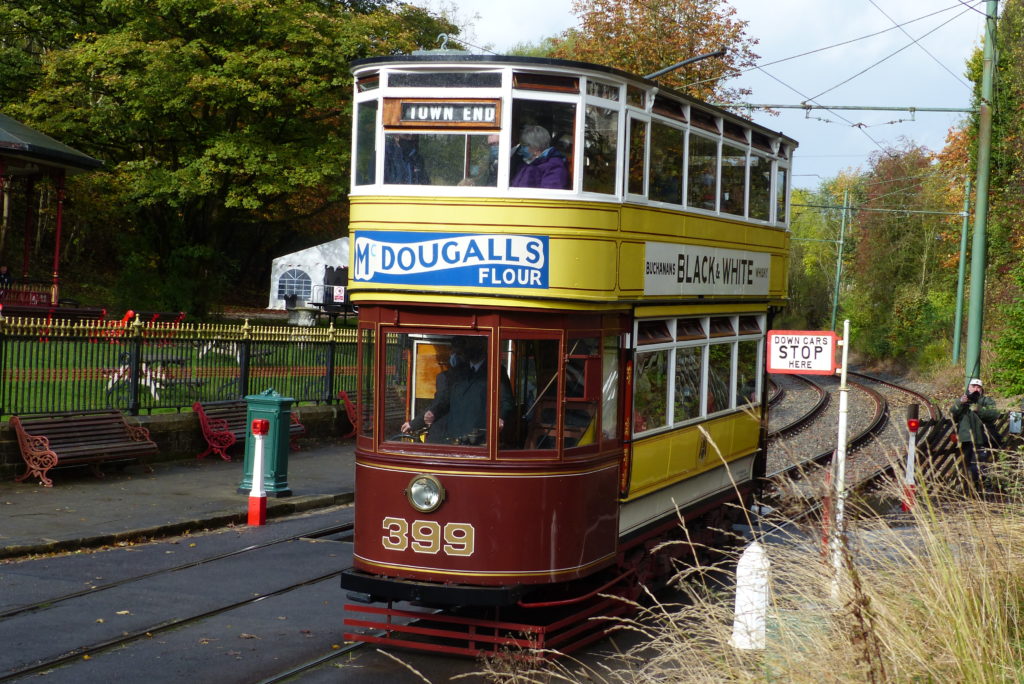
Photo: Jim Dignan
Although tramcars tended to cost a lot more than motorbuses when new, they normally lasted a lot longer in service and, even after withdrawal, some of them continued to earn their keep for their operators in some other capacity. One such example is Leeds 399, which was built by Leeds City Transport at its Kirkstall Road Works in 1925.
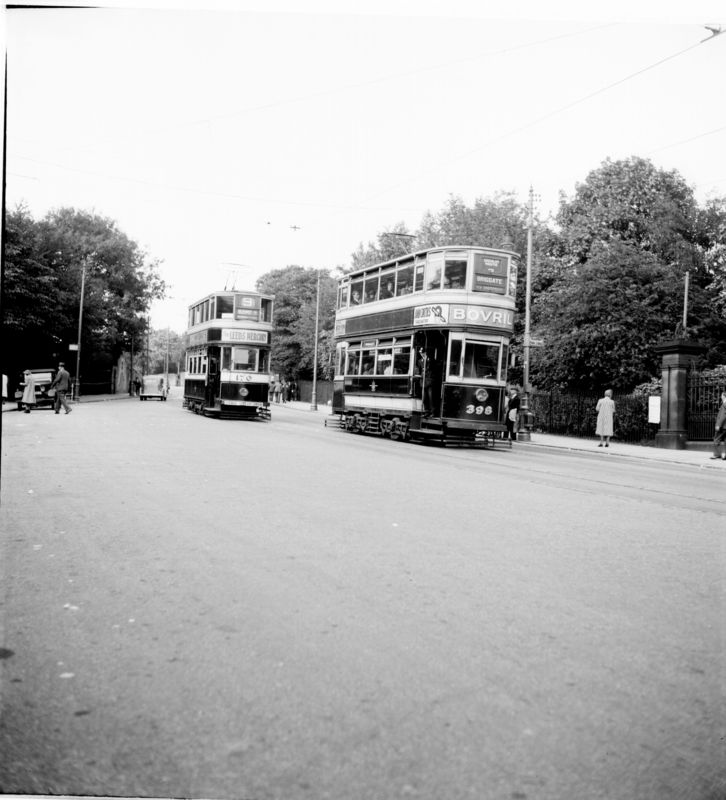
Sister car 398 and 170 at Roundhay Park. W.A. Camwell, date unknown.
The batch of which 399 formed part constituted the first totally enclosed tramcars to enter the Leeds fleet, though the basic bodywork closely resembled the traditional open balcony cars that had operated in Leeds with only minor variations since 1908. At the time it entered service (in April 1926), Leeds trams were painted in chocolate, primrose and white and 399 was the last car to emerge from the paint-shops in this – its current – livery. This colour scheme was soon to be replaced by a new princess blue and white livery, however, and 399 itself was repainted in this guise in 1928.
Although it looks a more traditional car than Leeds 345, which is also in the collection, it is actually five years younger than the latter, which was originally built as an open balcony car but was modernised in the 1930s; this renovation, together with its updated dark blue livery, helps to explain 345’s slightly more youthful appearance.
Specification
- Type of tram
- Double deck fully enclosed four wheel electric tramcar
- Livery
- Chocolate, primrose and white
- Seating capacity
- 70 (24 downstairs, 46 upstairs)
- Date built
- 1925
- Date entered service
- 3rd April 1926
- Manufacturer of body
- Leeds City Transport
- Manufacturer of truck
- Peckham P22. [The tram looks to have been designed for ‘pivotal’ trucks and the timbers above the truck have been prepared for mounting them. In the end, however, the car entered service on P22 trucks, which it retained for the rest of its life].
- Gauge
- 4’ 8½”
- Motor
- Dick Kerr 30B1 2 x 50hp
- Controller
- DK DB1 K4B with air box tops
- Current collector
- Trolley pole
- Modification
Minor changes to the route indicators in 1930 (single blind destination indicator replaced by three blind type). 1938 – the original trolley pole was replaced by a bow collector.
- Withdrawn from service
8th June 1951, whereupon it became a depot shunter back in Kirkstall Works
- Subsequent history
Acquired by Leeds Tramway Historical Society (now known as the Leeds Transport Historical Society) in 1959, which saved it for preservation. Transported to Crich on 14/8/1959.
- Restoration history
Extensive restoration of both body and truck was required following a severe deterioration in its condition while being used as a works shunter after its withdrawal from passenger service.
- Current status
- Restored in operational condition. Commissioned for service as part of the operational fleet during the current season.
- Date started operating at Crich
- 1990. Has operated in 32 seasons, including 2023.
- Total mileage covered at Crich
- 33,151
- Current location
- Depots
- 1925 – 1951Fully operational on original tramway
- 1951 – 1959Used as works shunter on original tramway
- 1959 – 1991On display and undergoing restoration
- 1991 –Operational at Crich with occasional brief lay-offs for maintenance & repair work.

